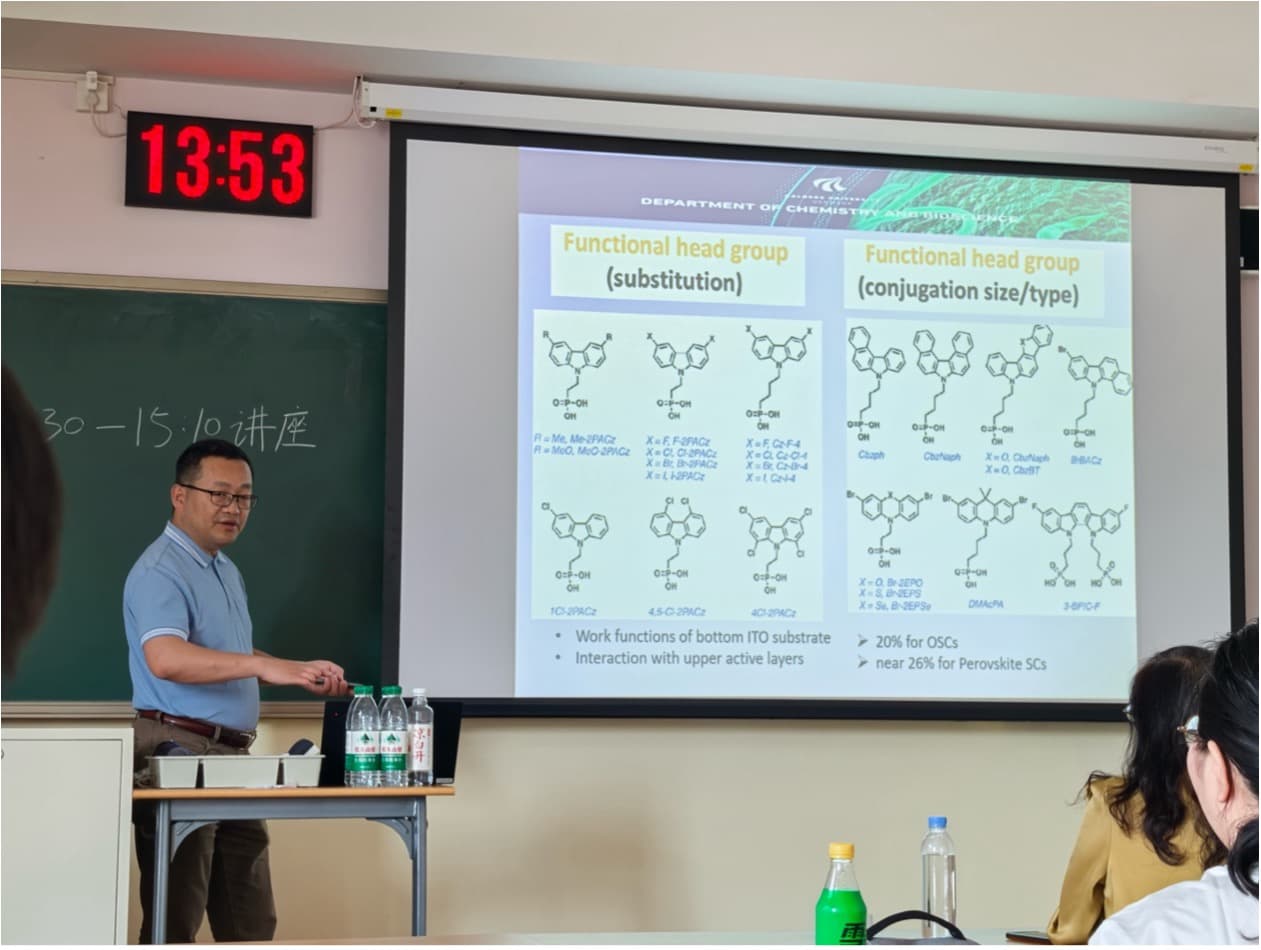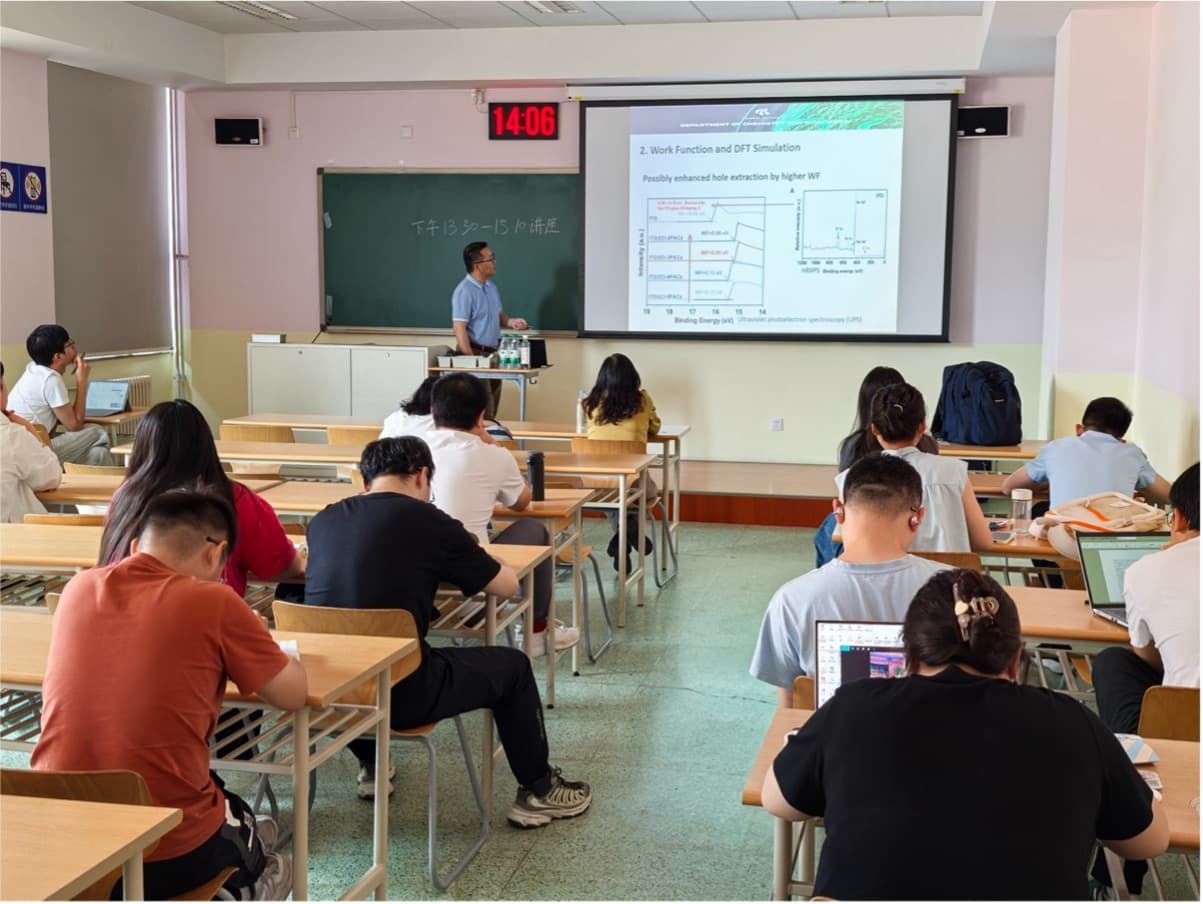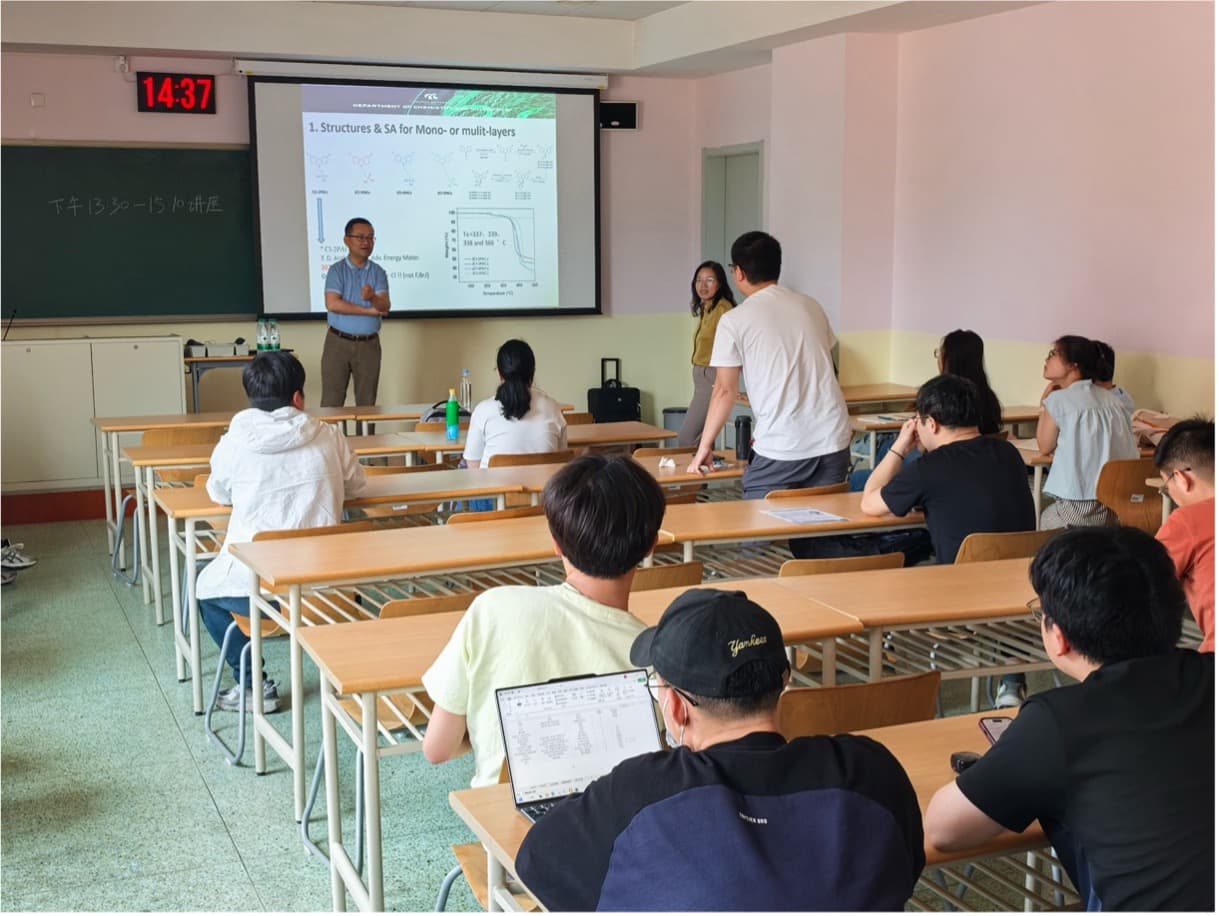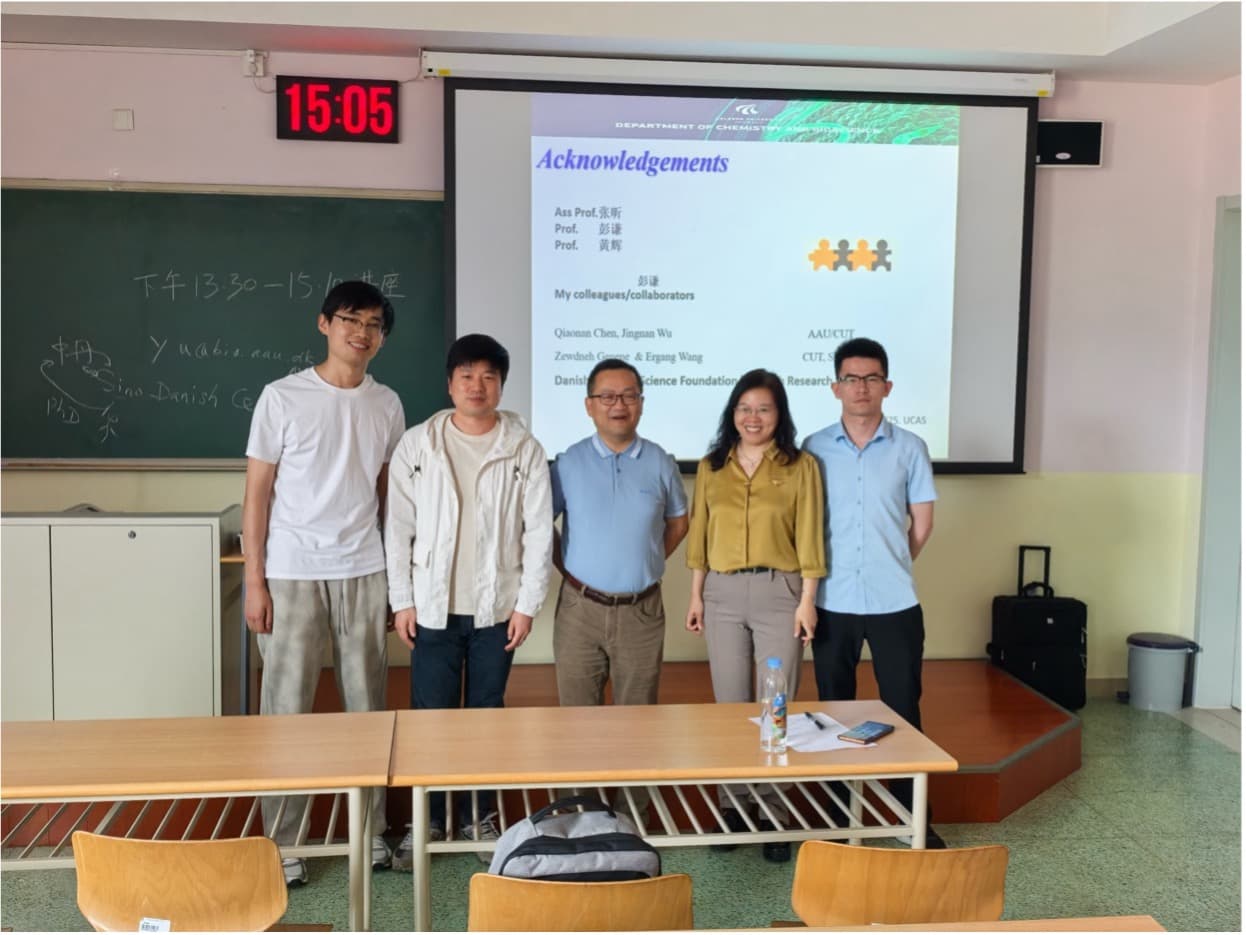At 1:30 PM on May 26, 2025, Dr. Donghong Yu from the Department of Chemistry and Bioscience at Aalborg University, Denmark, delivered a lecture titled “Novel Carbazole-Based Self-Assembled Monolayers: Molecular Conformation and Its Impact on Organic Photovoltaic Performance” at Room 304, Teaching Building No. 2, Yanqi Lake Campus, University of Chinese Academy of Sciences. The lecture was hosted at the invitation of Professor Hui Huang from the School of Materials Science and Optoelectronic Technology.

Dr. Donghong Yu received his Bachelor’s and Master’s degrees in Chemistry from Jilin University in 1991 and 1994, respectively. In 1997, he earned his Ph.D. from the State Key Laboratory of Polymer Chemistry and Physics at the Changchun Institute of Applied Chemistry, Chinese Academy of Sciences. From 1997 to 2006, he held positions as Assistant Professor, Special Research Fellow, Research Assistant Professor, and Assistant Professor at the State Key Laboratory of Polymer Chemistry and Physics (Changchun Institute of Applied Chemistry, CAS), the National Institute for Materials and Chemical Research (AIST, Japan), and the Departments of Mechanical Engineering and Chemistry & Bioscience at Aalborg University, Denmark. Since 2006, he has been a tenured Associate Professor in the Department of Chemistry and Bioscience at Aalborg University.
Dr. Yu’s research interests span organic photovoltaic materials, polymer light-emitting diodes, molecularly imprinted polymers (for molecular recognition and biosensing), and inorganic-organic hybrid nanobiomaterials. He has led projects funded by the Danish Agency for Technology and Innovation, the Danish National Science Foundation, and the Danish Strategic Research Council, with a total research funding exceeding DKK 20 million. He has published 152 academic papers with over 4,030 citations. He has supervised 5 postdoctoral researchers, 12 Ph.D. students, and co-supervised 5 Ph.D. candidates. In 2009, he was honored with the Best Teacher Award at Aalborg University.

In this lecture, Dr. Donghong Yu focused on a highly promising class of materials—carbazole-based self-assembled monolayers (SAMs)—and explored their application as hole transport layers (HTLs) in organic solar cells. Owing to their ultrathin film-forming capability and excellent interfacial tuning properties, these SAM materials have emerged as promising candidates for enhancing the architecture of photovoltaic devices, significantly enhancing both stability and efficiency. However, the specific influence of alkyl spacer chain length on the self-assembly behavior and device performance of SAMs remains insufficiently understood. To address this, Dr. Yu’s team designed and synthesized four bis(diazole)-substituted SAM materials with varying alkyl spacer lengths. A systematic evaluation was carried out to compare their molecular ordering, surface coverage, and impact on device performance.
Structural analyses, including single-crystal X-ray diffraction, revealed that SAMs with shorter spacer chains exhibited stronger intermolecular interactions and denser packing. This favorable molecular conformation promoted the formation of more ordered monolayers and significantly influenced the molecular footprint and surface coverage on ITO electrodes. As a result, hole injection efficiency and interfacial charge transport were substantially improved. Thanks to these structural optimizations, the SAM-based devices ultimately achieved a power conversion efficiency exceeding 18%, positioning them at the forefront of current SAM-based organic photovoltaic technologies.

This research provides new insights into the correlation between molecular structure and device performance in organic electronics. It also offers critical guidance for the molecular design of hole transport layers in next-generation, high-efficiency photovoltaic devices. At the conclusion of the lecture, Dr. Yu engaged in thorough discussions with faculty and students on topics such as material synthesis strategies and interfacial physics, thereby deepening the participants’ understanding of these advanced SAM-based materials.

